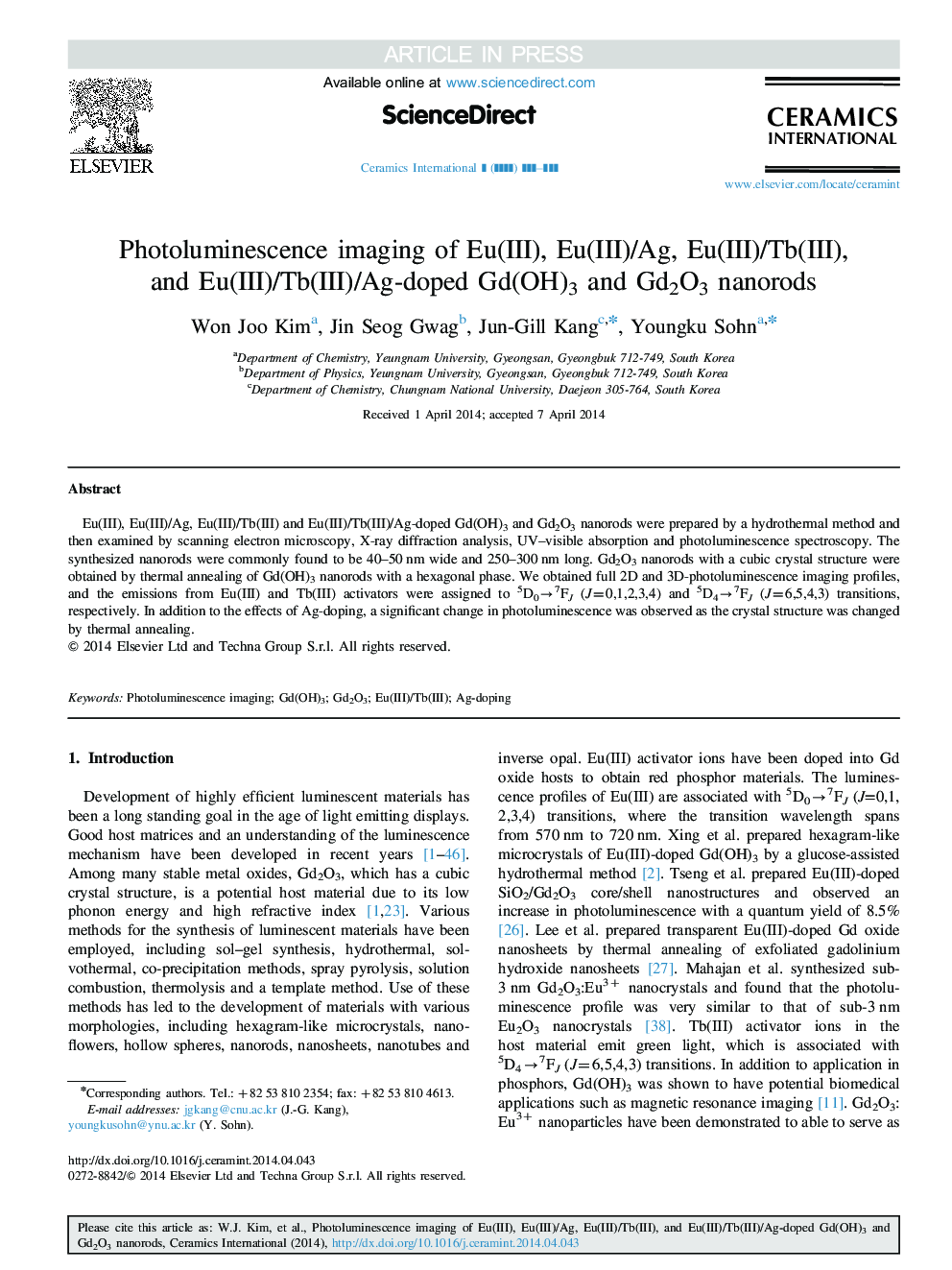| Article ID | Journal | Published Year | Pages | File Type |
|---|---|---|---|---|
| 10625489 | Ceramics International | 2014 | 10 Pages |
Abstract
Eu(III), Eu(III)/Ag, Eu(III)/Tb(III) and Eu(III)/Tb(III)/Ag-doped Gd(OH)3 and Gd2O3 nanorods were prepared by a hydrothermal method and then examined by scanning electron microscopy, X-ray diffraction analysis, UV-visible absorption and photoluminescence spectroscopy. The synthesized nanorods were commonly found to be 40-50Â nm wide and 250-300Â nm long. Gd2O3 nanorods with a cubic crystal structure were obtained by thermal annealing of Gd(OH)3 nanorods with a hexagonal phase. We obtained full 2D and 3D-photoluminescence imaging profiles, and the emissions from Eu(III) and Tb(III) activators were assigned to 5D0â7FJ (J=0,1,2,3,4) and 5D4â7FJ (J=6,5,4,3) transitions, respectively. In addition to the effects of Ag-doping, a significant change in photoluminescence was observed as the crystal structure was changed by thermal annealing.
Related Topics
Physical Sciences and Engineering
Materials Science
Ceramics and Composites
Authors
Won Joo Kim, Jin Seog Gwag, Jun-Gill Kang, Youngku Sohn,
